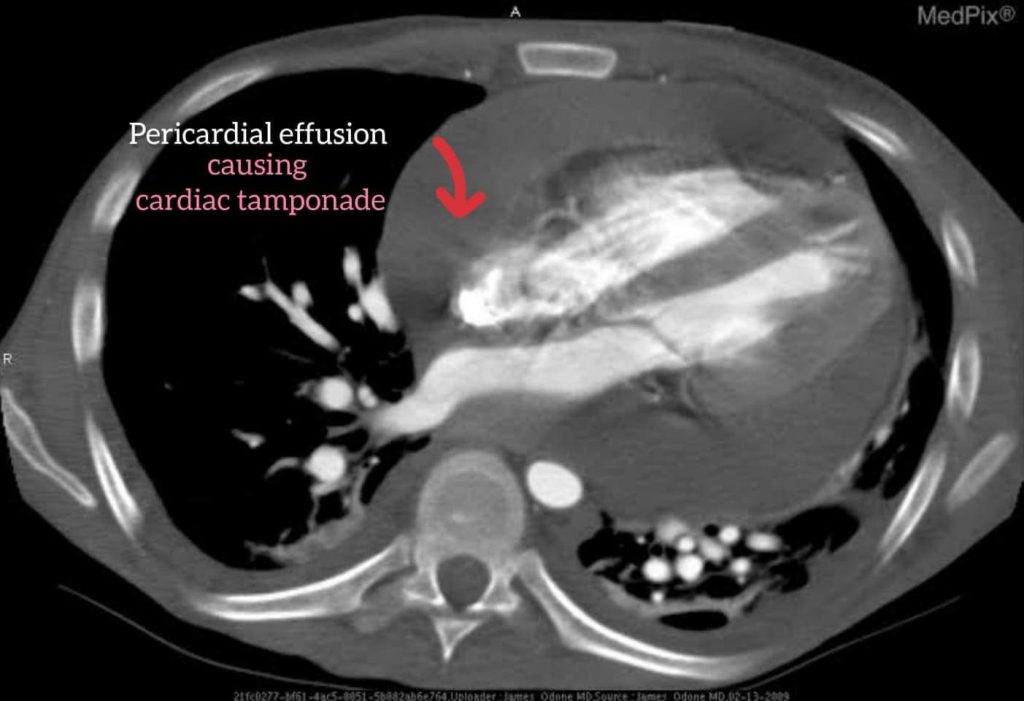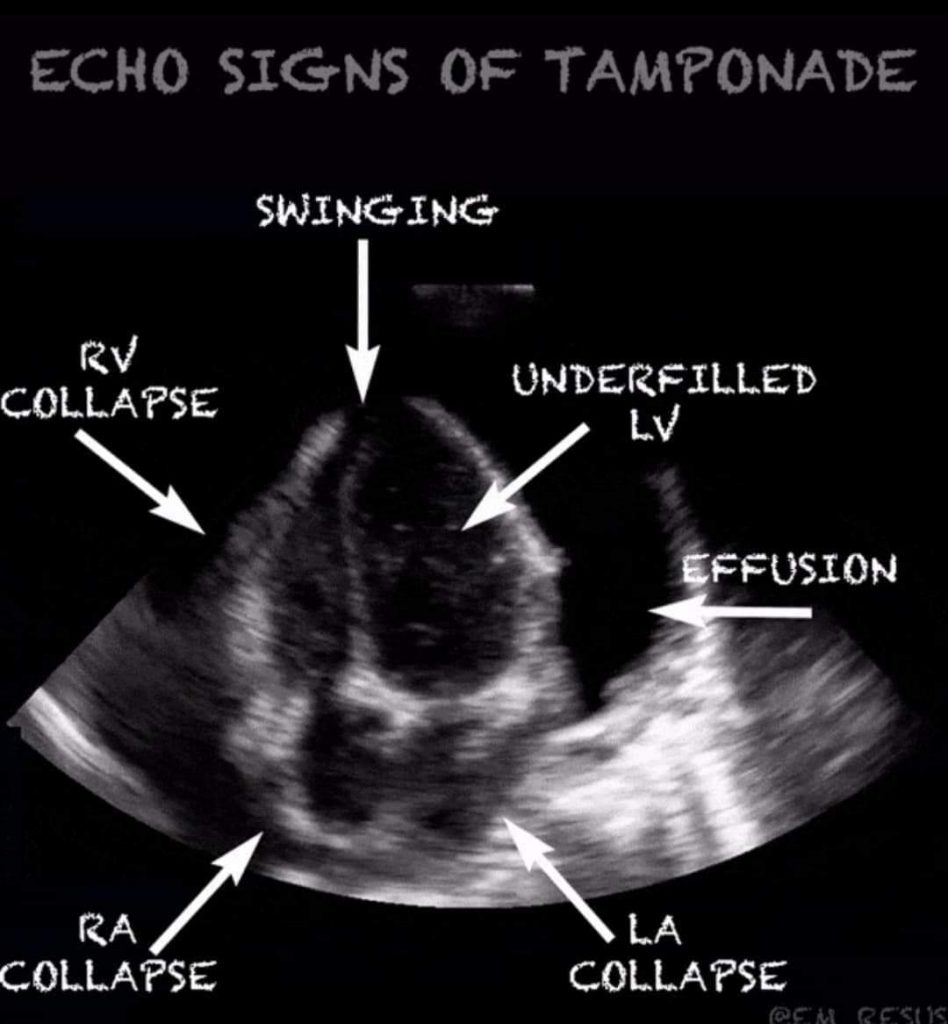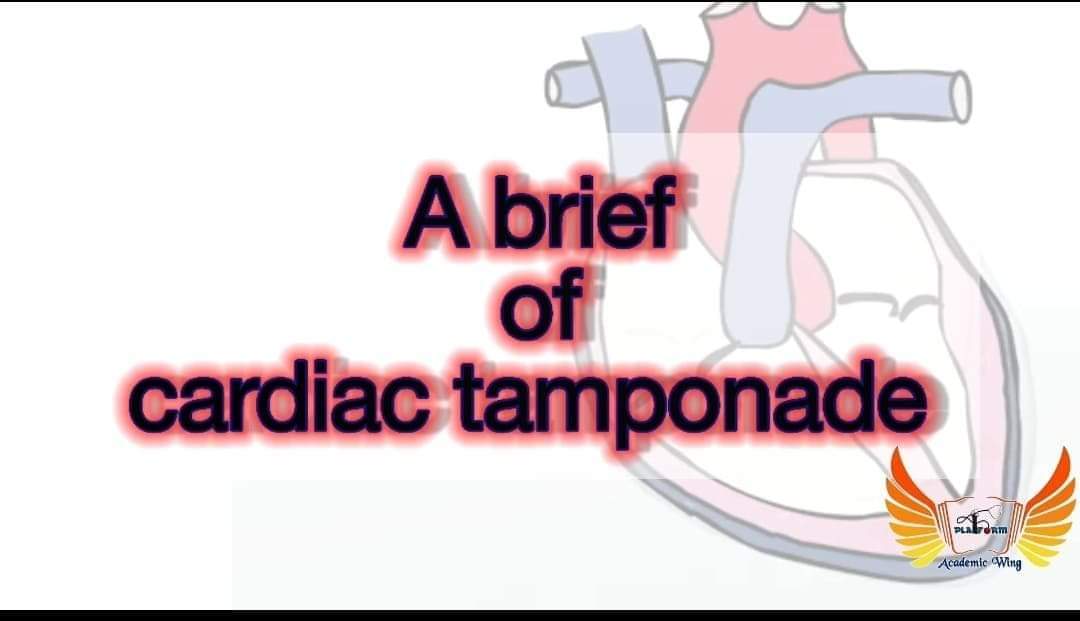Cardiac Tamponade:
It is the term used to describe, acute heart failure due to compression of heart resulting for a large pericardial effusion.
🔹Pathophysiology:
The heart is surrounded by the pericardium, which has 2 layers:
a) Fibrous pericardium (outer)
b) Serous pericardium (inner)
Between these two layers there is pericardial space containing pericardial fluid secreted by the serous pericardium. Its even reabsorbed by serous layer. Therefore the amount is 50ml normally.
Any cause of pericardial effusion that is excessive accumulation of fluid in the pericardial space leads to inability of heart to contract and relax properly. Therefore it decreases cardiac output. (Fluid amount ranges from 150-2000ml).

🔹Decreased Cardiac Output results in HYPOTENSION.
🔹Hypotension causes sympathetic stimulation therefore heart beats faster to over come the decreased pressure resulting “TACHYCARDIA“.
🔹Causes:
Pericardial effusion due to conditions like:
✔ Trauma- Stab or blunt injury
✔ Myocardial infarction
✔ Aortic dissection
✔ Heart surgery
✔ Pericarditis (any form)
✔ Secondary cancer metastasis mainly from lungs and breast
✔ Hypothyroidism (rarely)
🔹Clinical Features:
✔ Ill looking patient
✔ Hypotension
✔ Tachycardia
✔ Raised JVP
✔ Pulsus paradoxus
✔ Muffled heart sound
✔ Kussmaul’s sign (Kussmaul’s sign is a paradoxical rise in jugular venous pressure (JVP) on inspiration, or a failure in the appropriate fall of the JVP with inspiration).
✔ Dyspnea

🔹 Investigation:
✔ ECG
✔ Echocardiogram
✔ Chest Xray
✔ Cardiac catheterization for intracardiac pressure

🔹Management:
✔ Pericardiocentesis
✔ Treatment of underlying cause
🔹In case of aortic dissection:
Pericardiocentesis has usually been contraindicated, given the possibility that rapid drainage of pericardial blood may precipitate a worsening leak from the aorta into the pericardium.
Sushmita Chowdhury
USTC/IAHS
2015-16
platform academia/ Tohfa Rahman Galib

